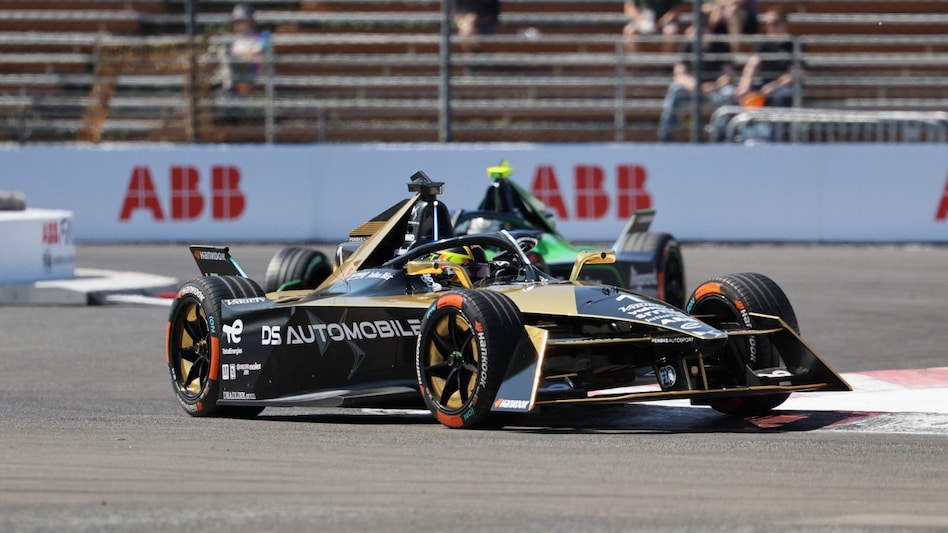 Jun 24, 2023; Portland, Oregon, USA; DS Penske driver Stoffel Vandoorne (1) rounds a turn during the practice session at the 2023 Portland E-Prix at Portland International Raceway. (Al Sermeno-USA TODAY Sports)
Jun 24, 2023; Portland, Oregon, USA; DS Penske driver Stoffel Vandoorne (1) rounds a turn during the practice session at the 2023 Portland E-Prix at Portland International Raceway. (Al Sermeno-USA TODAY Sports)  Jun 24, 2023; Portland, Oregon, USA; DS Penske driver Stoffel Vandoorne (1) rounds a turn during the practice session at the 2023 Portland E-Prix at Portland International Raceway. (Al Sermeno-USA TODAY Sports)
Jun 24, 2023; Portland, Oregon, USA; DS Penske driver Stoffel Vandoorne (1) rounds a turn during the practice session at the 2023 Portland E-Prix at Portland International Raceway. (Al Sermeno-USA TODAY Sports) During the qualifying round of the Formula E race held in Portland, Oregon last weekend, the DS Penske team found themselves in hot water after being caught installing an unauthorised RFID scanner at the pit entrance. This covert act led to a €25,000 (Rs 28.38 lakh) fine imposed by the FIA stewards, who believed the equipment had the potential to collect data from other race cars and provide an unfair advantage to the team.
Additionally, the team's drivers, Stoffel Vandoorne and Jean-Éric Vergne, were slapped with a pit lane start penalty for the race, which mandated them to wait until all other cars had passed before joining the race.
RFID chips have been utilised in Formula E tires since the inception of this burgeoning motorsport. Initially, these chips were employed to monitor tire conditions, such as temperature and pressure, in order to optimise their usage efficiently, as reported by Tyrepress in 2014.
However, the 2023 season brought significant changes to Formula E, including the introduction of the "Gen 3" car design and a new tire supplier, replacing Michelin with Hankook iON. Motorsport.com published a report during the off-season testing phase, shedding light on the challenges faced by teams and possibly explaining why DS Penske resorted to such drastic measures of data collection from the entire field.
The adoption of Hankook tires as the series' sponsor for the 2022-2023 season presented its own set of difficulties for the drivers, who had grown accustomed to Michelin tires over the previous eight seasons, as stated in a Motorsport report.
Also Read Jean-Eric Vergne wins India's first-ever Formula E in Hyderabad
Collecting live tire data from other cars in Formula E can provide valuable insights and advantages to teams in several ways:
Performance Optimisation: Tire performance plays a crucial role in the overall performance of a Formula E car. By gathering live data from other cars, teams can compare and analyse the tire conditions of their competitors. This information allows them to assess the effectiveness of their own tire strategies, make adjustments, and optimise their performance accordingly.
Temperature and Pressure Analysis: Live tire data from other cars help teams monitor temperature and pressure variations across different racing conditions. This information enables them to fine-tune their tire setups and make strategic decisions regarding tire changes during the race. It allows teams to better understand tire behaviour and optimise their tire management strategies for improved performance and longevity.
Grip Assessment: By collecting tire data from other cars, teams can gain insights into the grip levels offered by different tires under various track conditions. This knowledge helps them assess the effectiveness of their own tire choices and adjust their strategies accordingly. It allows teams to make informed decisions on tire selection and setup to maximise grip and enhance overall performance.
Strategy Development: Live tire data from other cars aid teams in developing effective race strategies. By understanding the tire behaviour of their competitors, teams can adjust their pit stop schedules, plan to overtake manoeuvres and strategise their energy management more effectively. This information helps teams make data-driven decisions during the race, increasing their chances of success.
Competitive Advantage: Accessing live tire data from other cars can provide a competitive advantage by revealing insights and trends that may not be readily apparent. By identifying the strengths and weaknesses of their competitors' tire performance, teams can adjust their own strategies to exploit vulnerabilities and gain an edge on the track.
Also Read
Formula 1: Can winning Bahrain Grand Prix determine the entire season’s outcome?
Beginner's guide to Formula 1, see F1 2023 season teams, drivers and more
Copyright©2023 Living Media India Limited. For reprint rights: Syndications Today